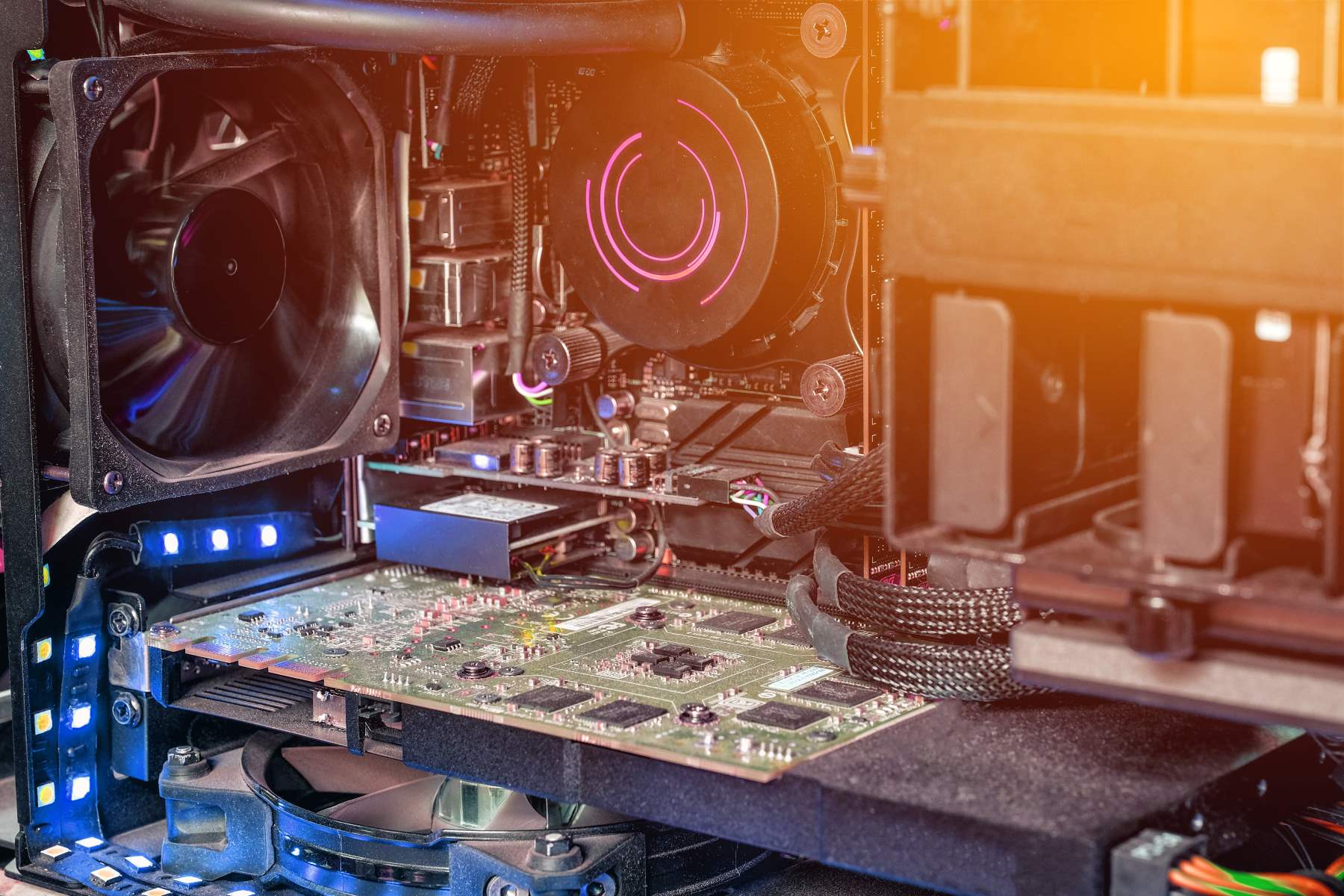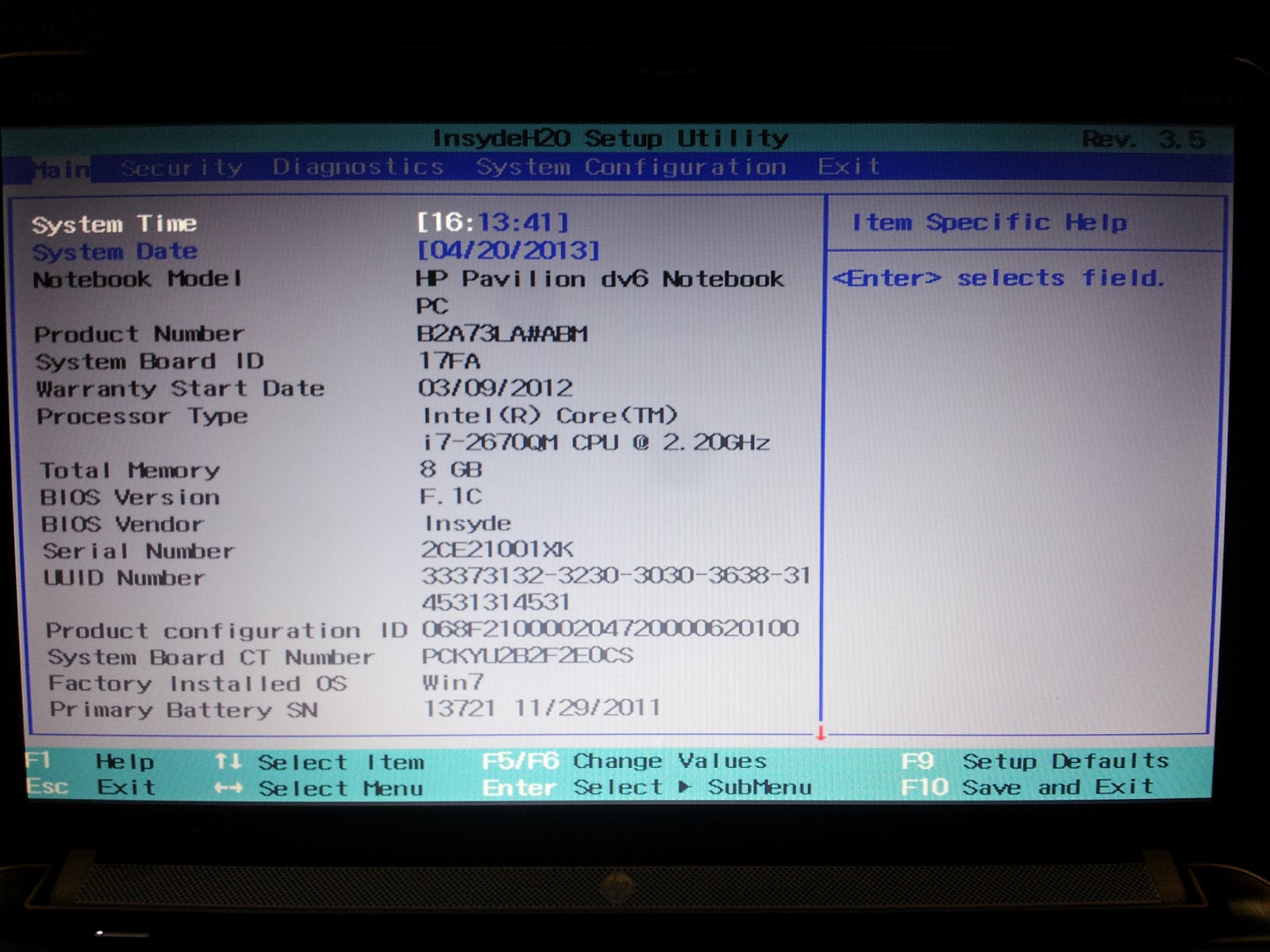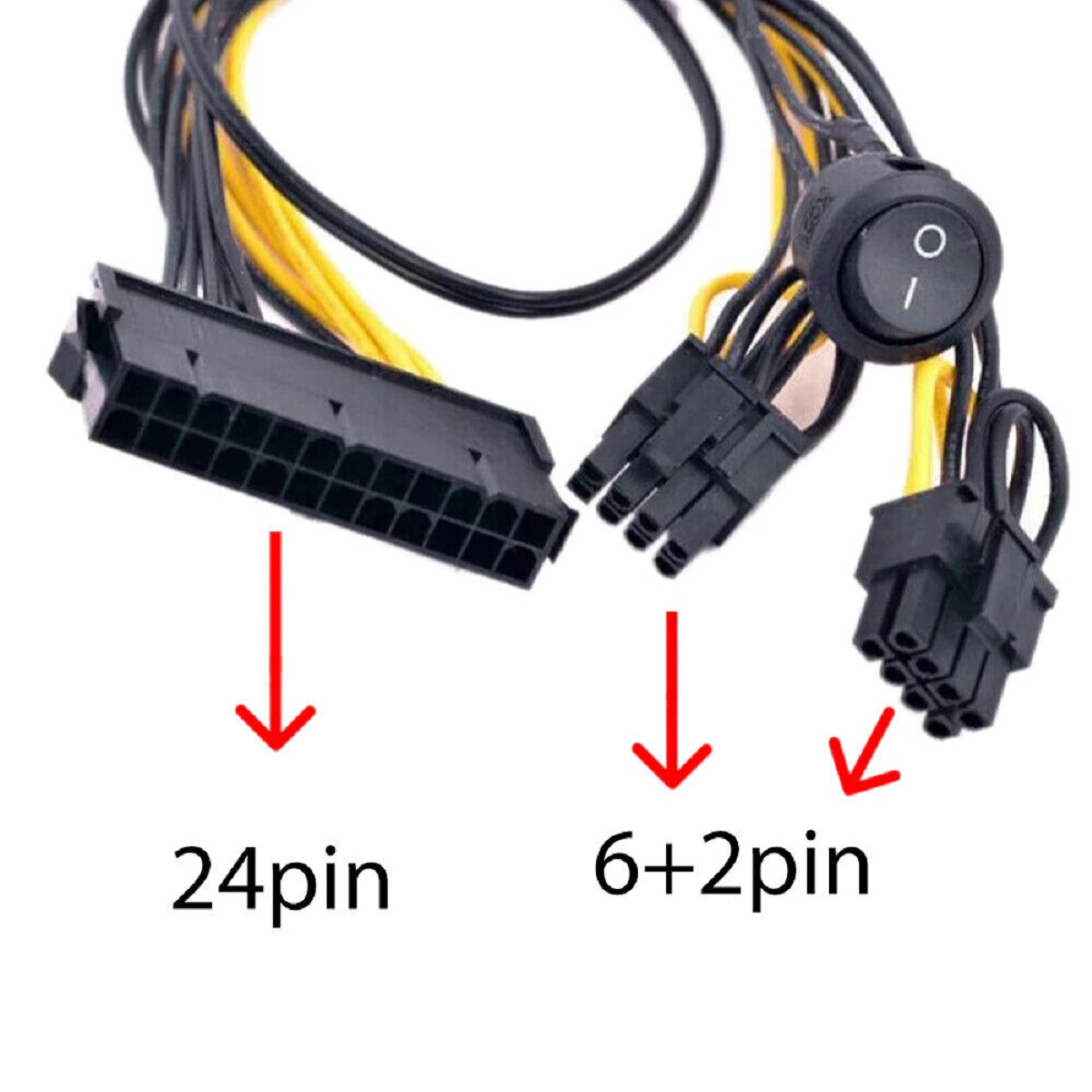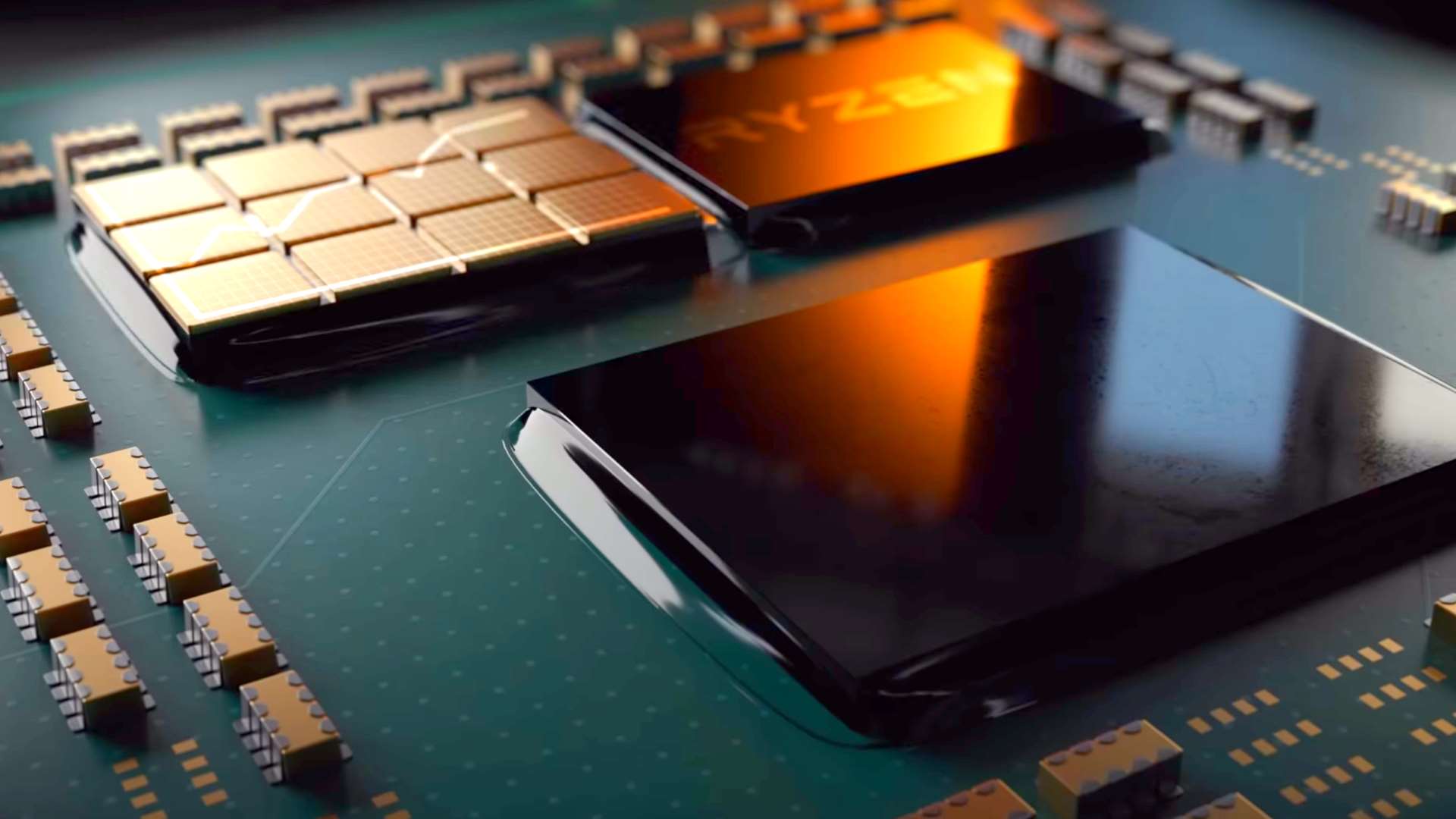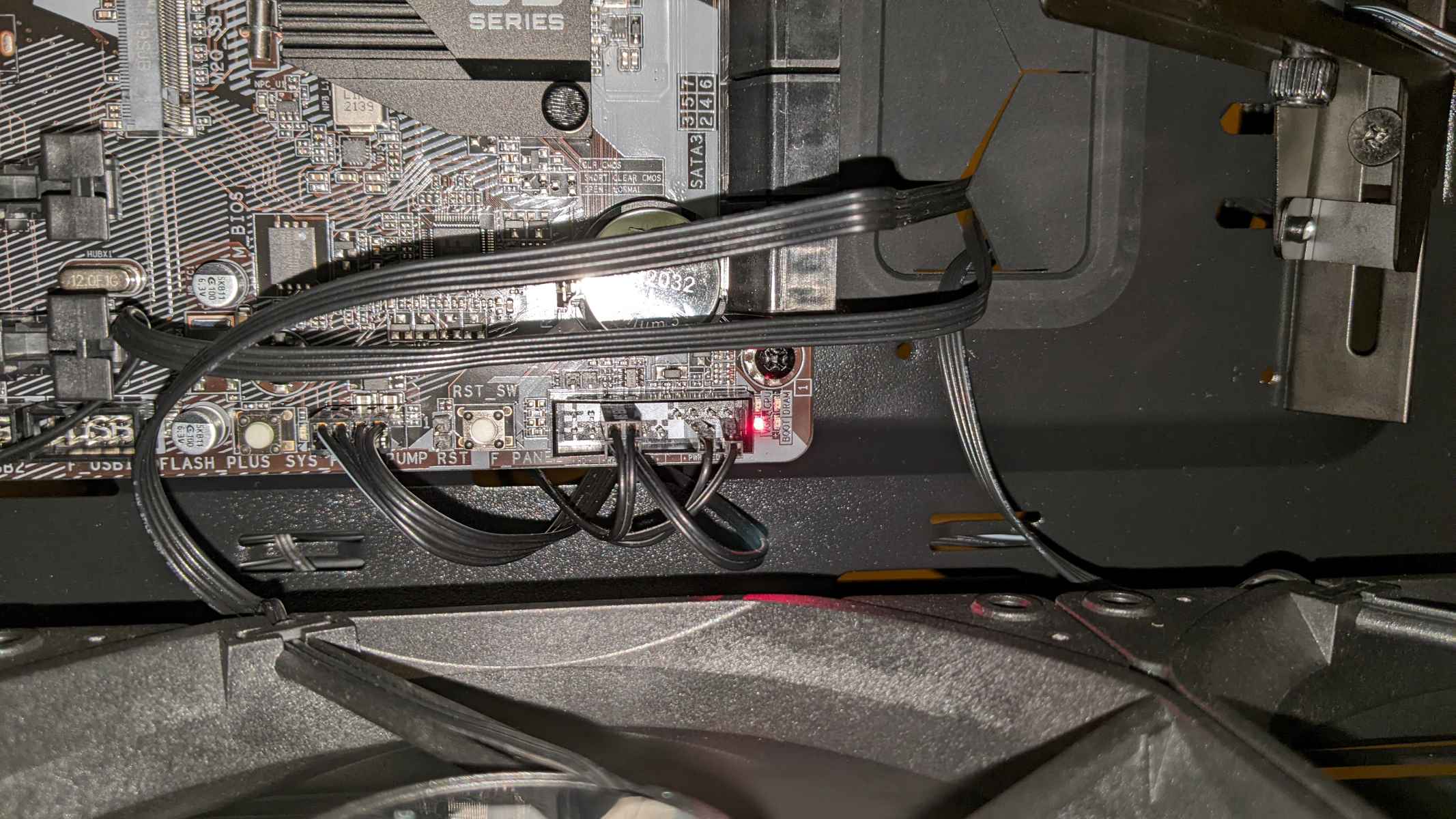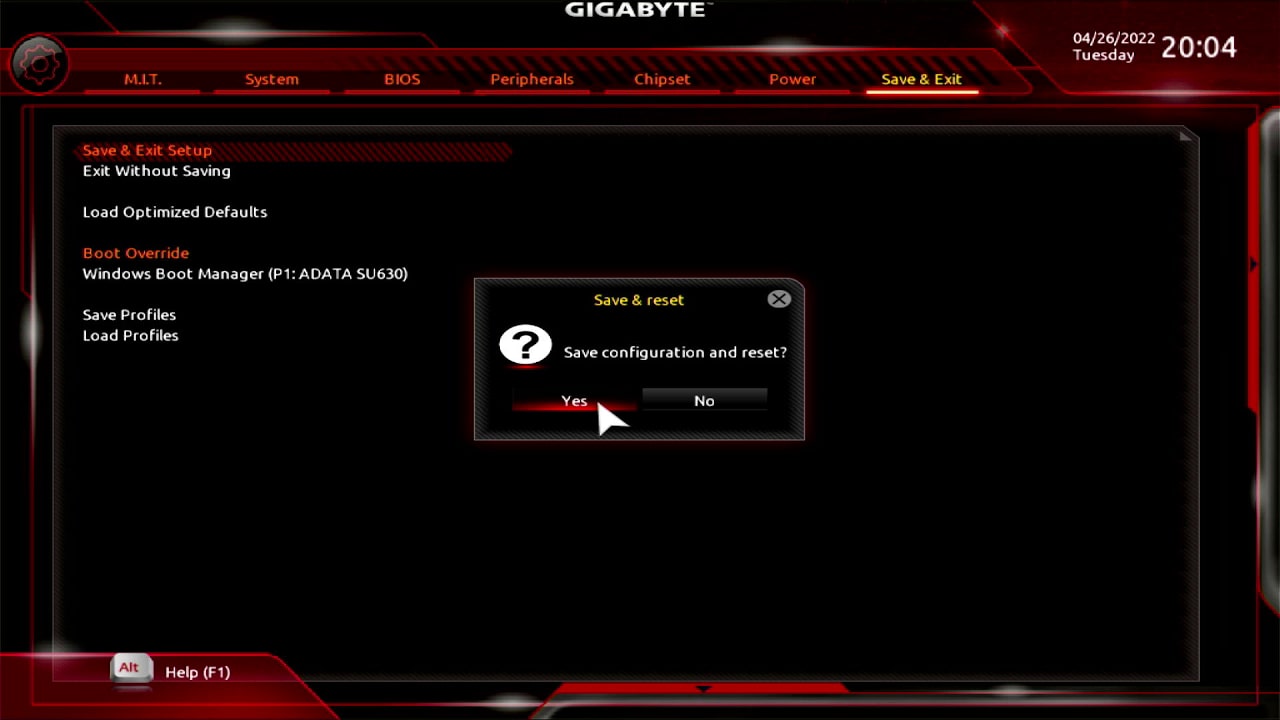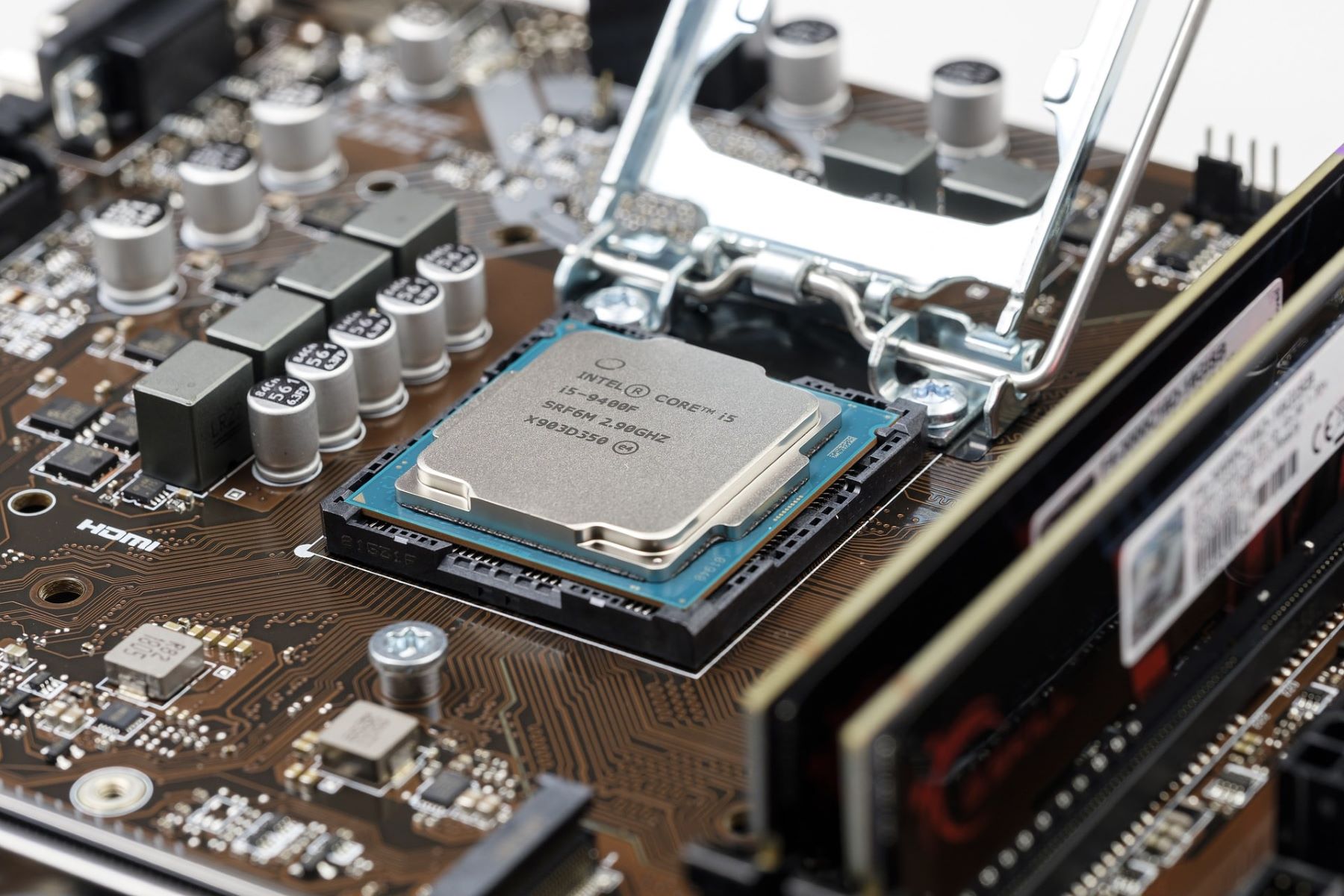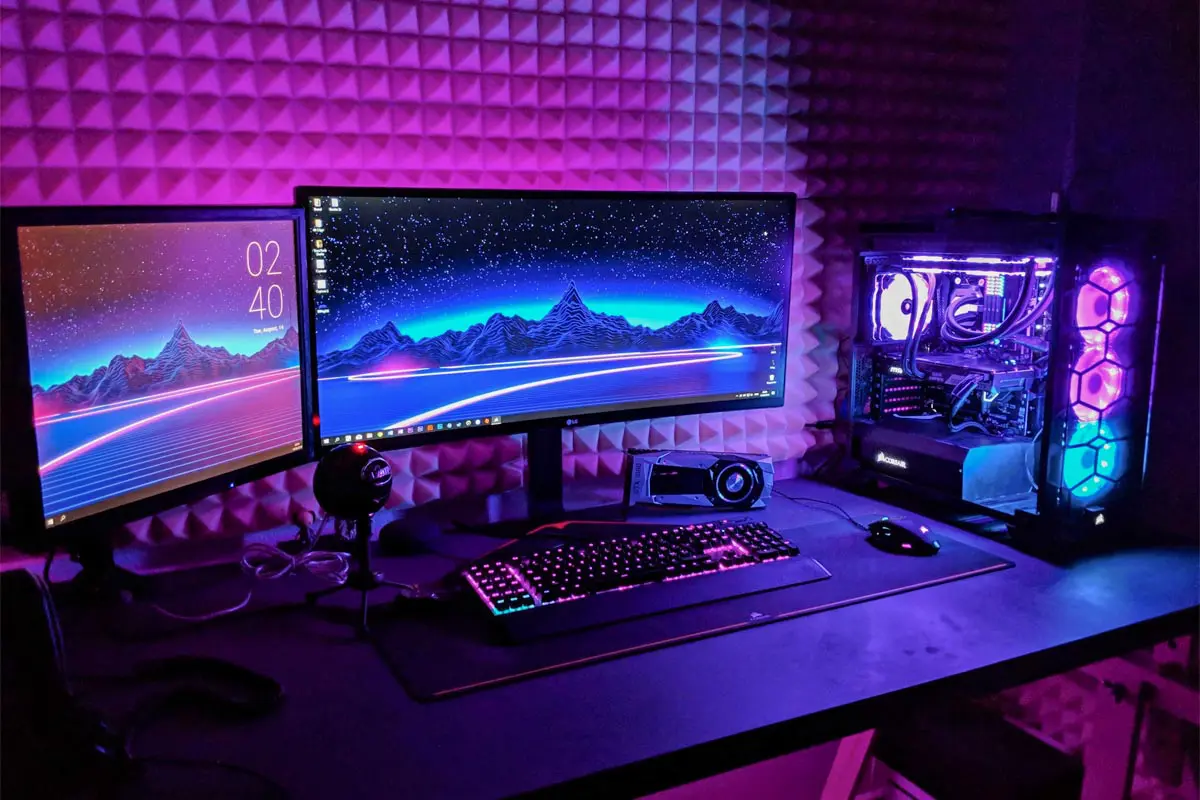Introduction
Welcome to the world of graphic cards and motherboards! If you’re building a computer or upgrading your current setup, understanding the compatibility between graphic cards and motherboards is of utmost importance. The graphic card you choose can have a significant impact on your computer’s performance, so it’s crucial to make sure it’s compatible with your motherboard.
Compatibility refers to the ability of two or more components to work together seamlessly. In the case of graphic cards and motherboards, compatibility entails ensuring that the graphic card you select is physically and electrically compatible with your motherboard’s slot and power supply.
When it comes to choosing a graphic card, there are several factors to consider, from the specific capabilities and requirements of your desired card to the available slots on your motherboard. Additionally, different brands may have different levels of compatibility with certain motherboards.
In this article, we will delve into the intricacies of graphic card and motherboard compatibility. We will explore the factors you need to consider when choosing a graphic card, highlight some popular graphic card brands, and guide you on how to check for compatibility between your graphic card and motherboard.
Furthermore, we’ll touch on the importance of BIOS updates and offer tips for installing your graphic card without encountering compatibility issues. By the end of this article, you’ll have a comprehensive understanding of how to ensure a smooth and compatible pairing between your graphic card and motherboard.
Understanding Compatibility
When it comes to graphic card and motherboard compatibility, there are a few key aspects to consider. The first is the physical slot compatibility. Most modern motherboards have a PCI Express (PCIe) slot, which is the standard slot for graphic cards. However, there are different versions of PCIe, such as PCIe 3.0 and PCIe 4.0, and the graphic card you choose should match the version supported by your motherboard.
Another crucial aspect of compatibility is the power supply. Graphic cards require a certain amount of power to operate efficiently. Some high-performance graphic cards may require additional power connectors, while others draw power directly from the motherboard’s PCIe slot. Before making a purchase, ensure that your power supply is sufficient to handle the power requirements of the graphic card.
Furthermore, it’s important to consider the dimensions of the graphic card and whether it will fit within your computer case. Some graphic cards can be quite large and may not fit in compact cases, so be sure to check the dimensions before making a selection.
Additionally, keep in mind that different graphic cards have varying performance levels and capabilities. Consider the purpose of your computer usage, whether it’s gaming, video editing, or graphic design, and choose a graphic card that meets your specific requirements. It’s also worth noting that certain applications or games may have specific recommendations or requirements for graphic cards, so it’s beneficial to do some research before making a purchase.
Lastly, compatibility extends beyond the physical and technical aspects. Different graphic card brands may have different levels of compatibility with specific motherboards. Some motherboard manufacturers may have partnerships or optimizations with certain graphic card brands, resulting in better compatibility and performance. It’s advisable to check for compatibility lists or recommendations from both the graphic card and motherboard manufacturers to ensure a seamless pairing.
Understanding the compatibility factors is crucial for a smooth and efficient computing experience. By considering the physical slot compatibility, power requirements, dimensions, performance levels, and brand compatibility, you can make an informed decision when choosing a graphic card for your motherboard.
Considerations for Choosing a Graphic Card
Choosing the right graphic card for your computer setup involves careful consideration of several factors. To ensure optimal performance and compatibility, keep the following considerations in mind:
1. Purpose: Determine the primary use of your computer. If you’re a gamer, you’ll need a graphic card with high processing power and ample video memory to run demanding games smoothly. For content creators, such as video editors or graphic designers, a graphic card with excellent rendering capabilities and support for professional software applications is essential.
2. Budget: Set a budget for your graphic card purchase. While high-end graphic cards offer top-of-the-line performance, they can be more expensive. Evaluate your needs and find a balance between performance and affordability.
3. Performance Specifications: Look at the technical specifications of different graphic cards, including clock speed, memory bandwidth, CUDA cores (NVIDIA), or stream processors (AMD). Higher values in these specifications generally indicate better performance. Research and compare benchmarks to find the right balance between price and performance for your needs.
4. Power Requirements: Check the power requirements of the graphic card and ensure that your power supply unit can handle the load. High-performance cards often require additional power connectors, so make sure your power supply has the necessary connectors available.
5. Cooling and Noise: Consider the cooling system of the graphic card. Cards with efficient cooling solutions (such as multiple fans or advanced heat sinks) tend to run cooler and quieter. If you prefer a quiet system, look for cards labeled as “quiet” or “low-noise” models.
6. Brand Reliability and Support: Research and choose reputable graphic card brands known for their reliability, customer support, and driver updates. Well-established brands often provide better compatibility and long-term support for their products.
7. Future Upgradability: Consider future upgradability when choosing a graphic card. Ensure that your motherboard has an available and compatible slot for future upgrades. Additionally, check if your power supply unit has enough power headroom to support more powerful graphic cards down the line.
By considering these factors, you can narrow down your options and find a graphic card that suits your specific needs, fits within your budget, and is compatible with your motherboard and power supply. It’s essential to strike the right balance between performance, affordability, and compatibility for a satisfying computing experience.
Compatible Graphic Card Brands
When it comes to graphic card compatibility, it’s important to consider the brand of the graphic card you intend to purchase. While most graphic cards of reputable brands follow industry standards for compatibility, there are some advantages to choosing certain brands. Here are a few popular graphic card brands known for their compatibility:
1. NVIDIA: NVIDIA is one of the leading brands in the graphic card market, offering a wide range of options for gamers, content creators, and professionals. NVIDIA graphic cards are widely compatible with the majority of motherboards, thanks to their adherence to standard PCIe specifications. They also offer regular driver updates and optimizations for various software applications.
2. AMD: AMD is another renowned brand in the industry, offering graphic cards suitable for various computing needs. Like NVIDIA, AMD graphic cards are compatible with most standard PCIe slots. AMD emphasizes their commitment to open-source technologies, making their graphic cards compatible with a wider range of operating systems and driver support.
3. ASUS: ASUS is a popular motherboard manufacturer that also produces graphic cards. By choosing an ASUS graphic card, you can have a good chance of achieving optimal compatibility with ASUS motherboards. ASUS uses high-quality components and offers specialized features for enhanced performance and stability.
4. MSI: MSI is another well-regarded brand that produces reliable and compatible graphic cards. MSI’s graphic cards are known for their robust cooling systems and overclocking capabilities. They offer a variety of options suitable for gaming enthusiasts, content creators, and professionals.
5. Gigabyte: Gigabyte is a reputable brand known for its high-performance motherboards, and they also offer compatible and reliable graphic cards. Gigabyte’s graphic card lineup features excellent cooling solutions and overclocking potential, making them popular among gamers and enthusiasts.
While the brands mentioned above are known for their compatibility, it’s essential to always consult the compatibility lists or recommendations provided by the motherboard and graphic card manufacturers. These lists will give you specific information regarding which graphic cards are officially supported and tested on certain motherboard models.
Ultimately, the compatibility between a graphic card brand and a motherboard depends on the adherence to industry standards, including PCIe specifications, power requirements, and software driver support. When choosing a graphic card, considering a compatible brand can help ensure a smoother integration between your graphic card and motherboard, resulting in optimal performance and compatibility.
Checking Motherboard Compatibility
Before purchasing a graphic card, it’s crucial to check the compatibility between the card and your motherboard. Here are some steps you can follow to ensure a compatible pairing:
1. Identify the Motherboard Model: Determine the exact model of your motherboard. You can usually find this information by looking at the motherboard’s documentation, checking the motherboard’s BIOS, or using specialized software designed to detect system hardware.
2. Consult the Manufacturer’s Website: Visit the website of the motherboard manufacturer and find the support or specifications section for your specific motherboard model. Look for information regarding compatible graphic card slots and power requirements.
3. Check the PCIe Slot Version: Determine the PCIe slot version supported by your motherboard. It is usually indicated as PCIe 2.0, PCIe 3.0, or PCIe 4.0. This information will help you choose a compatible graphic card that matches the slot version of your motherboard.
4. Consider Power Supply and Connectors: Check the power supply unit (PSU) in your computer. Ensure that it has the necessary connectors and sufficient power output to support the graphic card you intend to install. High-end graphic cards may require additional power connectors like 6-pin or 8-pin PCIe connectors.
5. Double-Check Physical Clearance: Confirm that there is enough space inside your computer case to accommodate the length, height, and width of the graphic card. Some graphic cards can be quite large and may require additional clearance for proper installation and cooling.
6. Read User Reviews and Forums: Consider reading user reviews and visiting forums related to your specific motherboard model. Often, other users will share their experiences and compatibility information regarding various graphic cards they have used with the same motherboard.
7. Seek Professional Assistance: If you’re uncertain about the compatibility between your motherboard and a specific graphic card, consider seeking advice from a computer hardware professional or contacting the customer support of the graphic card or motherboard manufacturer. They can provide you with expert guidance based on your specific setup.
By following these steps, you can ensure that the graphic card you select is compatible with your motherboard. Checking compatibility beforehand will save you from potential issues and ensure a smooth integration of the graphic card with your system.
BIOS Updates for Compatibility
In some cases, you may encounter compatibility issues between your motherboard and a new graphic card due to outdated BIOS firmware. BIOS (Basic Input/Output System) is responsible for initializing hardware components during system startup. Outdated BIOS may lack the necessary support for newer graphic cards, leading to compatibility problems. Fortunately, BIOS updates can often resolve these issues.
1. Check for BIOS Updates: Visit the motherboard manufacturer’s website and navigate to the support or downloads section. Look for BIOS updates specifically addressing graphic card compatibility or listing improvements and bug fixes related to graphics. Download the latest BIOS version for your motherboard model.
2. Read the Instructions: Carefully read the instructions provided by the manufacturer on how to perform a BIOS update. Pay attention to any warnings or precautions, as a BIOS update requires caution to avoid damaging your motherboard.
3. Follow the Update Process: Follow the provided instructions to update your motherboard’s BIOS. This process typically involves creating a bootable USB drive, accessing the BIOS settings, and using the manufacturer’s provided utility to flash the new BIOS version.
4. Backup Your Data: It’s always a good practice to back up your important data before updating the BIOS. While the chances of something going wrong during a BIOS update are relatively low, it’s better to be safe than sorry.
5. Test Compatibility: After successfully updating the BIOS, install the new graphic card and ensure that it works without any compatibility issues. Check for any unusual behavior, such as system crashes or artifacts on the screen. If everything runs smoothly, the BIOS update has likely resolved the compatibility problem.
6. Seek Professional Help: If you’re unsure about performing a BIOS update yourself or encounter difficulties during the process, consider seeking assistance from a computer technician or contacting the manufacturer’s customer support. They can guide you through the update or perform it for you.
Updating the BIOS to the latest version can often resolve compatibility issues between your motherboard and graphic card. However, it’s important to note that updating the BIOS carries a slight risk, and any errors during the process can potentially brick your motherboard. Therefore, it’s crucial to carefully follow the instructions provided by the manufacturer and exercise caution during the update.
Installing the Graphic Card
Once you have ensured compatibility and updated the BIOS if necessary, it’s time to install the graphic card into your computer. Follow these steps for a successful installation:
1. Prepare Your Workspace: Before opening up your computer, make sure to power it off and unplug all cables. Find a well-lit and static-free workspace to work on.
2. Remove the Side Panel: Open the computer case by removing the side panel. This may involve unscrewing a few screws or sliding a latch, depending on your case model.
3. Locate the PCIe Slot: Identify the appropriate PCIe slot on your motherboard for installing the graphic card. Typically, it will be a long slot and located near the back of the case.
4. Remove Slot Covers: If there are slot covers blocking the PCIe slot, carefully remove them by unscrewing or pushing out the metal tabs. These covers may be protecting the ports or preventing dust from entering the case.
5. Insert the Graphic Card: Holding the graphic card by its edges, align the card’s connectors with the PCIe slot and gently insert it into the slot. Apply slight pressure until the card is fully seated in the slot. The card’s metal bracket should align with the case’s rear panel.
6. Secure the Graphic Card: Use a screw or latch to secure the graphic card to the case. This will ensure the card stays in place and prevents accidental dislodging during use or transportation.
7. Connect Power Cables: If your graphic card requires additional power connectors, connect them securely from the power supply unit to the card. Refer to the card’s manual or manufacturer’s instructions to identify the correct connectors.
8. Replace the Side Panel: Once the graphic card is installed and secured, carefully put the side panel back onto the case and secure it in place using the screws or latch.
9. Power On and Install Drivers: Reconnect all cables to your computer and power it on. Once the operating system has loaded, install the appropriate drivers for your graphic card. These drivers can typically be downloaded from the manufacturer’s website.
10. Test and Adjust: Verify that the graphic card is functioning properly by running diagnostic software or testing it in a heavy-load application. Adjust any necessary settings, such as resolution and refresh rate, in your computer’s display settings to optimize performance.
By following these steps, you can successfully install a graphic card into your computer. Remember to handle the card with care, ensure proper connections and power, and always refer to the manufacturer’s instructions for specific installation guidance.
Troubleshooting Compatibility Issues
Even with careful consideration and proper installation, compatibility issues between a graphic card and a motherboard can still arise. If you encounter any compatibility problems, try the following troubleshooting steps:
1. Check Connections: Ensure that all cables and connectors are securely plugged in. Loose or improperly connected cables can cause display issues or prevent the graphic card from being recognized.
2. Reinstall Drivers: Sometimes, driver conflicts or outdated drivers can lead to compatibility problems. Try uninstalling the current graphic card drivers and reinstalling the latest version from the manufacturer’s website.
3. Update Operating System: Ensure that your operating system is up to date with the latest patches and updates. Some compatibility issues can be resolved by installing the latest updates, which may include fixes for graphics-related issues.
4. Test with Different Slots: If you have multiple PCIe slots on your motherboard, try installing the graphic card in a different slot. This can help determine if the issue is specific to a particular slot or if it’s a general compatibility problem.
5. Check Power Supply: Verify that your power supply unit can provide enough power to the graphic card. Inadequate power supply can cause stability issues or prevent the card from functioning properly. Consider upgrading the power supply if necessary.
6. Clear CMOS: Resetting the motherboard’s CMOS (Complementary Metal-Oxide Semiconductor) can sometimes resolve compatibility issues. Follow the instructions in your motherboard’s manual to clear the CMOS and restore default settings.
7. Seek Technical Support: If you’ve exhausted the troubleshooting steps and are still experiencing compatibility issues, it may be beneficial to seek technical support. Contact the customer support of the graphic card or motherboard manufacturer for guidance or consult a computer repair professional for further assistance.
8. Consider a BIOS Update: If you haven’t already done so, updating your motherboard’s BIOS to the latest version can potentially resolve compatibility issues. Check the manufacturer’s website for BIOS updates specifically addressing graphic card compatibility.
Keep in mind that troubleshooting compatibility issues can sometimes be a complex process. It’s important to be patient and methodical when troubleshooting, and don’t hesitate to seek professional assistance if needed. Remember that compatibility issues are relatively rare, and most graphic cards and motherboards work together seamlessly.
Conclusion
Ensuring the compatibility between a graphic card and motherboard is essential for a smooth and efficient computing experience. By understanding the physical, technical, and brand compatibility factors, you can confidently choose a graphic card that fits your needs and works seamlessly with your motherboard.
Considerations such as the purpose of your computer usage, budget, performance specifications, power requirements, and brand reliability play a vital role in selecting the right graphic card. It’s important to strike the right balance between performance, affordability, and future upgradability.
Checking motherboard compatibility involves identifying the motherboard model, consulting the manufacturer’s website for specifications, checking PCIe slot versions, power supply compatibility, and ensuring ample physical clearance. User reviews and forums can provide valuable insights into compatibility experiences.
In the case of compatibility issues, BIOS updates can often resolve them by adding support for newer graphic cards. Following proper installation procedures and troubleshooting steps like checking connections, reinstalling drivers, updating the operating system, and testing different slots can help resolve any issues that arise.
Remember that compatibility issues are relatively uncommon, and most graphic cards and motherboards are designed to work together seamlessly. By following the guidelines outlined in this article, you can make informed decisions and have a smooth installation process.
Now armed with the knowledge of graphic card and motherboard compatibility, you can confidently choose the right graphic card for your specific needs, ensuring optimal performance and a satisfying computing experience.







